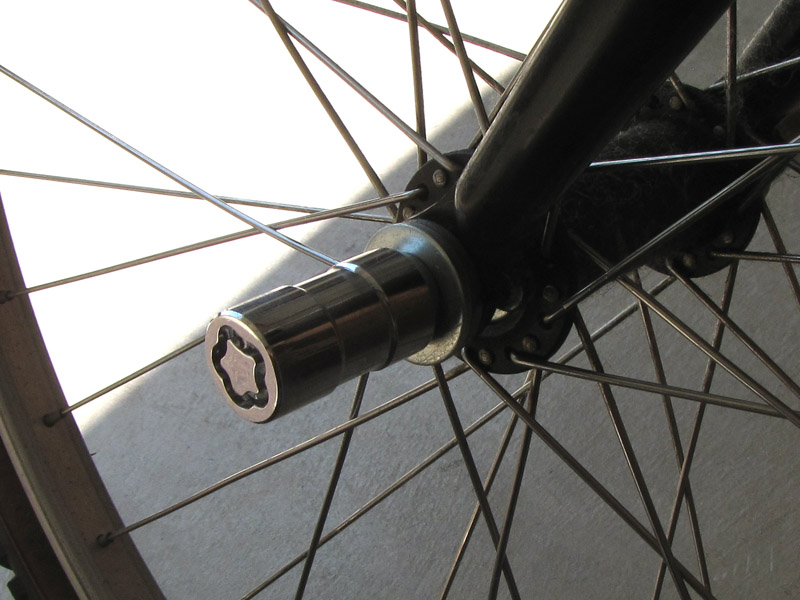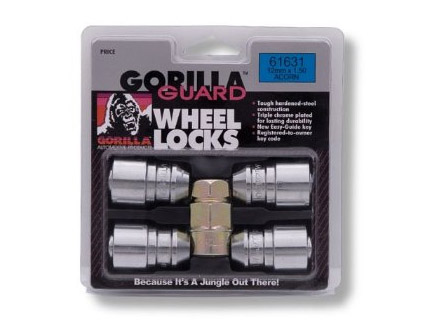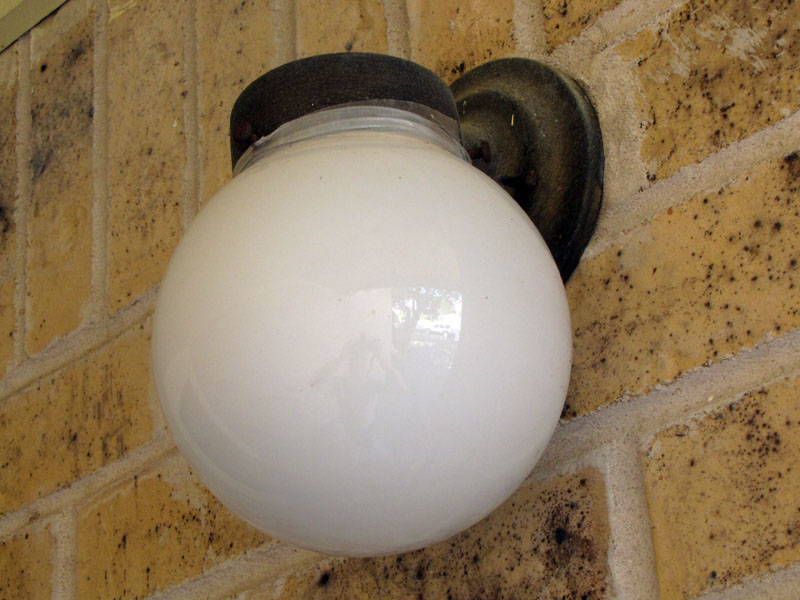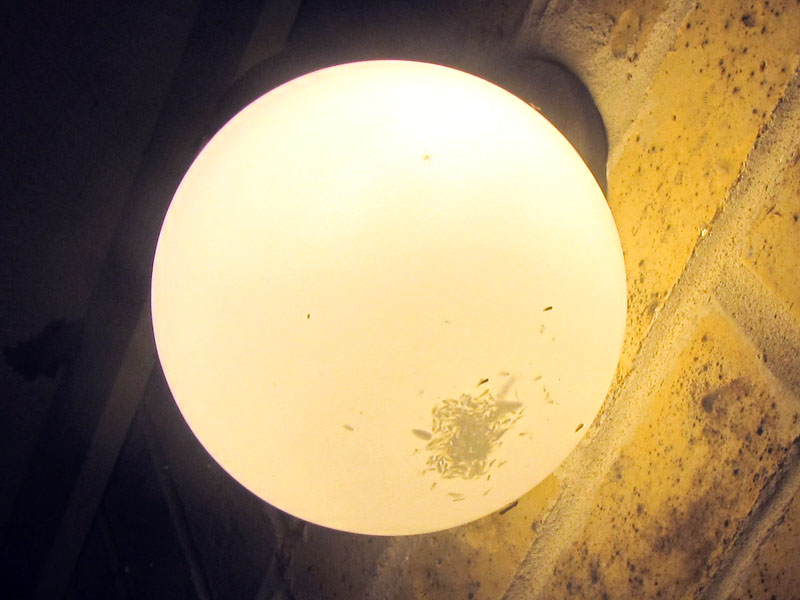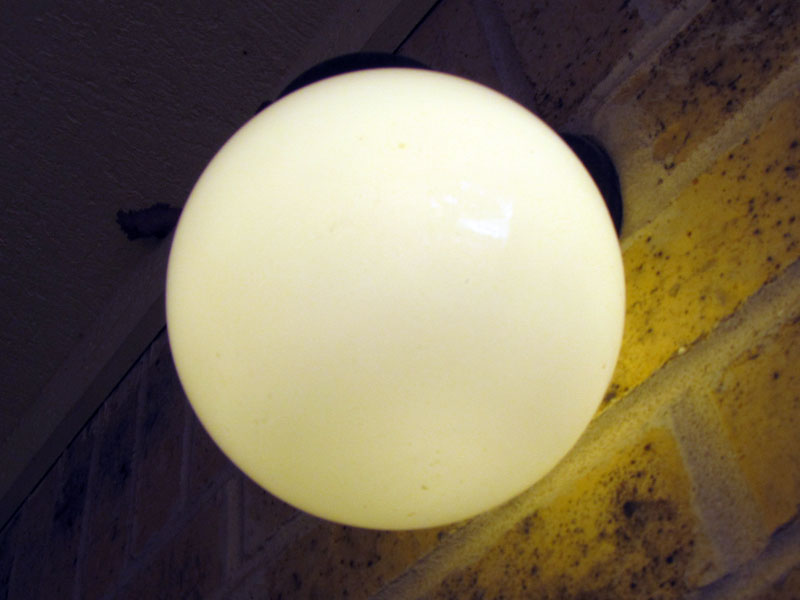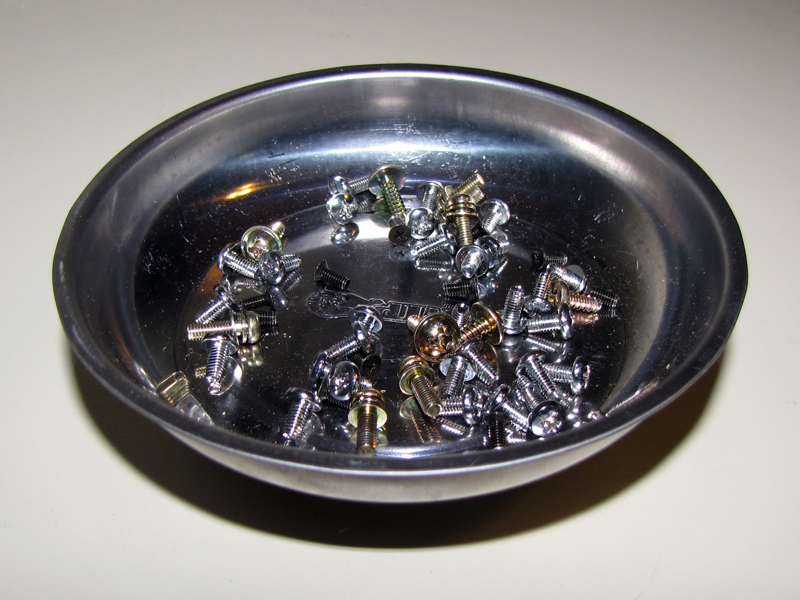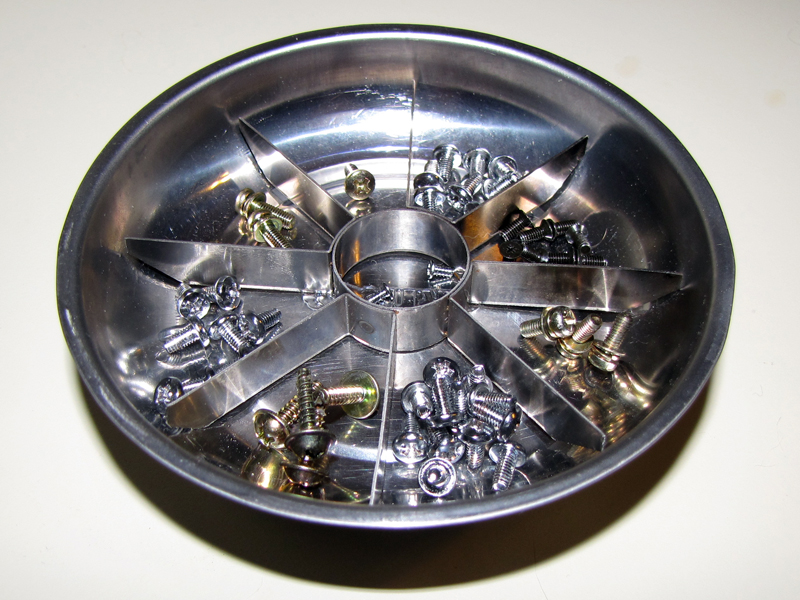A couple years back it occurred to me that it would be cool to have wheel locks for my bike like those that are already available for cars. They’re just special lug nuts that are sold four to a set (you only need one locking nut per wheel, after all). Each set features a unique pattern of interlocking circular grooves (the “lock”) that is pseudorandomly generated by the machinery at the factory, together with a mating wrench (the “key”). The profile of the nut is round everywhere else, so as long as you don’t lose the key you’re the only one with the proper tool to remove the nut. Of course, like pretty much all tamper-proof fasteners, it can still be defeated by casting, but that extra effort is probably enough to deter the average street thief.
Anyway, they’ve got ’em for cars already. You can buy a set at AutoZone. I did. And I wish I could get them for bikes, too, but nobody makes them. This prototype is my attempt to hack a car lug nut onto a bike axle, and although I did make it work by ordering a replacement axle with an unusual thread and using a pipe fitting as a thread adapter (plus a couple of odd washers) it was pretty wonky and probably unsafe.

